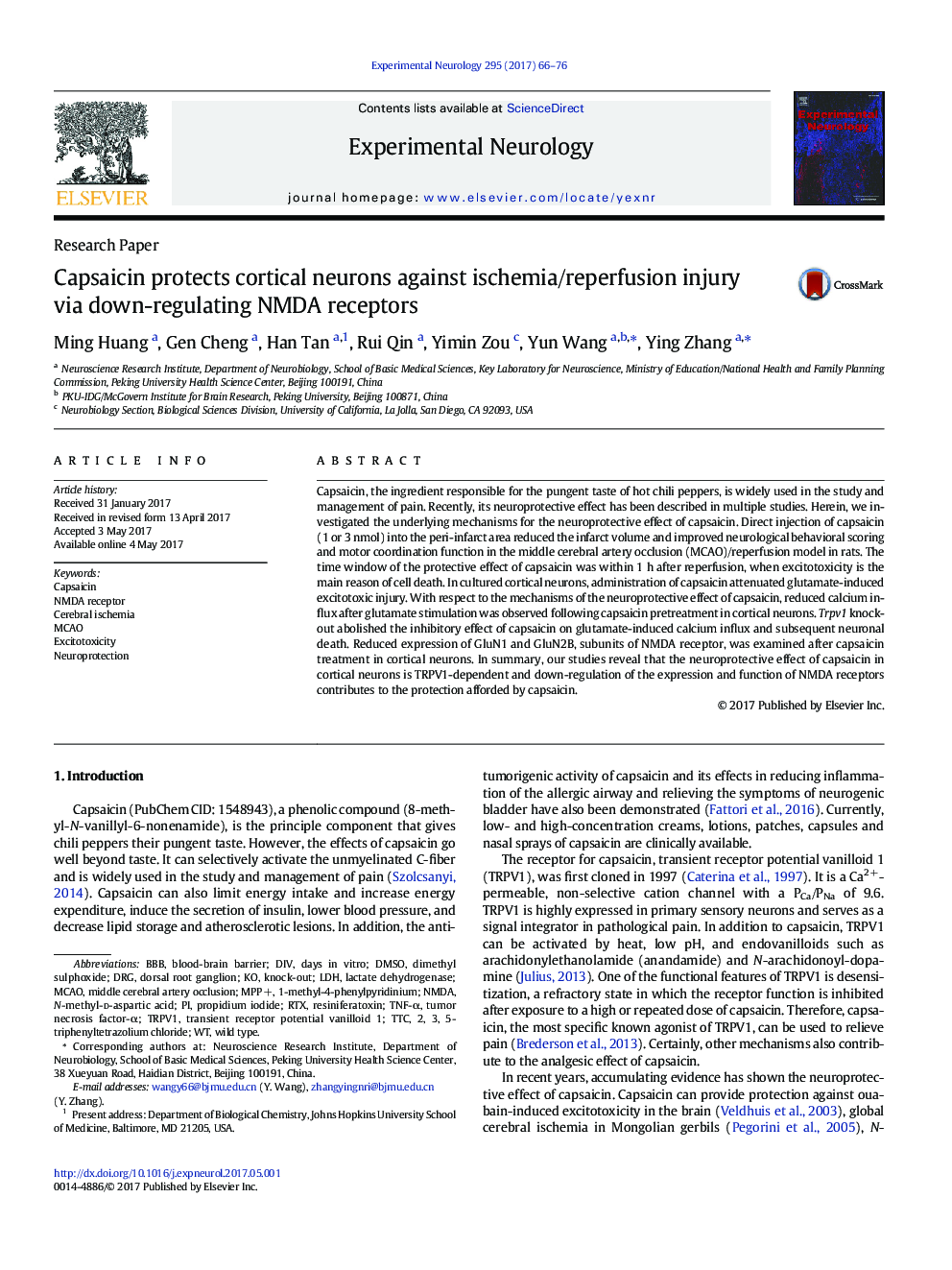| Article ID | Journal | Published Year | Pages | File Type |
|---|---|---|---|---|
| 5629107 | Experimental Neurology | 2017 | 11 Pages |
â¢Injection of capsaicin in the peri-infarct area alleviates neuronal ischemic injury.â¢Capsaicin attenuates glutamate-induced excitotoxicity in cultured cortical neurons.â¢Neuronal TRPV1 contributes to the neuroprotective effect of capsaicin.â¢Capsaicin down-regulates the expression and function NMDA receptors.
Capsaicin, the ingredient responsible for the pungent taste of hot chili peppers, is widely used in the study and management of pain. Recently, its neuroprotective effect has been described in multiple studies. Herein, we investigated the underlying mechanisms for the neuroprotective effect of capsaicin. Direct injection of capsaicin (1 or 3Â nmol) into the peri-infarct area reduced the infarct volume and improved neurological behavioral scoring and motor coordination function in the middle cerebral artery occlusion (MCAO)/reperfusion model in rats. The time window of the protective effect of capsaicin was within 1Â h after reperfusion, when excitotoxicity is the main reason of cell death. In cultured cortical neurons, administration of capsaicin attenuated glutamate-induced excitotoxic injury. With respect to the mechanisms of the neuroprotective effect of capsaicin, reduced calcium influx after glutamate stimulation was observed following capsaicin pretreatment in cortical neurons. Trpv1 knock-out abolished the inhibitory effect of capsaicin on glutamate-induced calcium influx and subsequent neuronal death. Reduced expression of GluN1 and GluN2B, subunits of NMDA receptor, was examined after capsaicin treatment in cortical neurons. In summary, our studies reveal that the neuroprotective effect of capsaicin in cortical neurons is TRPV1-dependent and down-regulation of the expression and function of NMDA receptors contributes to the protection afforded by capsaicin.
